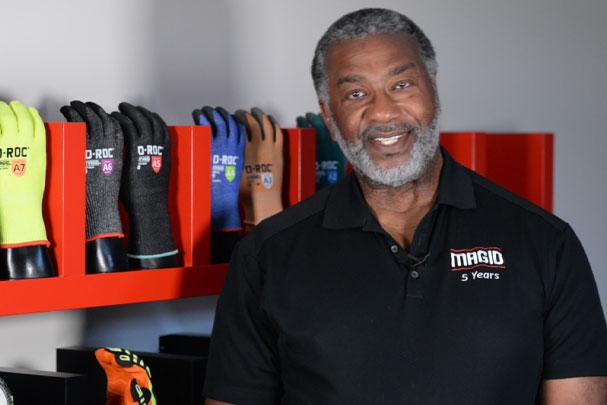
What is a WBGT, & Why Do You Need One?
By John Heniff, Safety Writer, Magid
You may have heard that a WBGT (Wet Bulb Globe Temperature) monitor is an integral part of your heat safety program. If your response to that is, “A what?” you’re not alone!
Environmental monitoring is a crucial yet often misunderstood step in heat safety. You already know to give your workers cool beverages and to use body cooling gear. But proper environmental monitoring can let you know when you need to modify activity based on the environment or initiate specific heat safety practices from day to day and even hour to hour. It all begins with using the most accurate environmental reading.
HEAT INDEX VS. WET BULB GLOBE TEMPERATURE
Your favorite meteorologist or weather app will tell you different parts of the day’s forecast like the temperature or humidity level. It might also include the heat index, which is the measurement of air temperature combined with relative humidity to calculate what the temperature feels like within a general area.
Agencies like OSHA and NIOSH recommend using the local heat index to calculate environmental conditions for your jobsite. But the heat index only accounts for temperature and relative humidity in the shade and in a general geographic area. Any industrial worker can tell you, they don’t usually get to work all day in the shade! On top of that, natural and manufactured elements such as steaming asphalt or hot machinery create what’s called a microclimate that can make portions of your jobsite much hotter than the surrounding area, regardless of what the weather report says.
It's important to get the most accurate reading of heat stress on your jobsite so you know the risk factors for any given day or hour. That’s where using a WBGT monitor is your best bet. WBGT measures heat stress in direct sunlight by taking the ambient temperature, humidity, wind, and other factors into account.
How Does a WBGT Calculator Work?
Unlike a standard environmental thermometer, WBGT monitors can gather up-to-the-minute readings and calculate the most accurate temperature of your jobsites. Sometimes referred to as a heat stress tracker or meter, a WBGT monitor has a temperature sensor inside a 1-inch black globe that gathers environmental readings for different weather factors such as:
-
Air & Dewpoint Temperature
-
Heat Index
-
Wind Speed & Direction
-
Wind Chill
-
Altitude
-
Solar Radiation
-
Relative Humidity
-
Barometric Pressure


WHAT DOES A WBGT MONITOR
DO FOR YOU?
When conditions surpass a certain threshold, the monitor will emit audible and visual alarms to alert anyone nearby that the current temperature is within a heat stress warning zone, which you can determine when configuring your monitor. Some models can adjust the reading to incorporate how light or heavy your team’s workload is, how light or heavy their clothing and PPE is, and if the reading is being taken outdoors or indoors. While the monitor can’t track solar radiation indoors, some models have a vane mount installed to pick up indoor wind sources like a ceiling fan.
Many WBGT monitors have the capability to display an area’s Thermal Work Limit (TWL) rating, as well. TWL ratings are a measurable limit for safe work based on ambient temperature, relative humidity, wind speed, and other environmental conditions that WBGT monitors track. TWL ratings are classified into different categories of working zones, each with their own advice for interventions and work-to-rest schedules.
| Thermal Work Limit Zones | Interventions |
| >220 | No limits for self-paced work for hydrated, trained workers |
|
220-140 |
|
| 140-115 |
This zone exists to help identify situations where environmental conditions can be detrimental to work in:
|
| <115 |
Work should be limited to only rescue operations or essential maintenance:
|
*Credit: Kestrel
With all these features, WBGT monitors can help you determine when to call for breaks, when to adjust work-to-rest ratios, and much more. Make sure you have WBGT monitors available to measure microclimates around your jobsites and ensure your workers are protected from heat stress!










